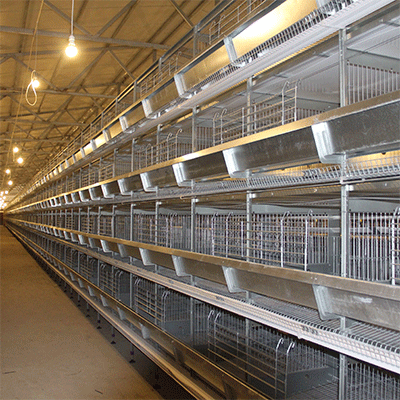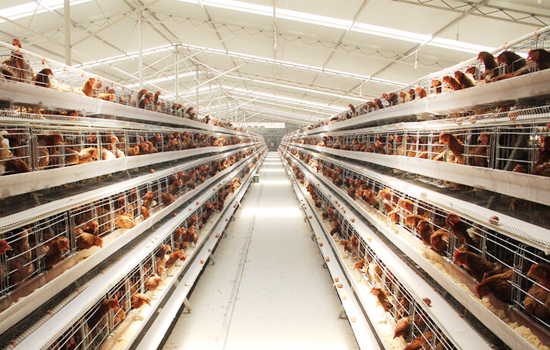The importance of battery chicken cages for intensive poultry farming projects
- Published in Tips for Chicken Breeding
The battery chicken cages is one of the important poultry farming equipment for the development of intensive poultry farming. According to the physiological characteristics of chickens in different periods, rationally adjust the environmental conditions of the chicken house, and use the battery cage for poultry for ventilation.
- The small ventilation of the chicken cagesis to meet the basic physiological needs of the chickens, that is, the ventilation required for the chickens to maintain their life and health. According to the tidal volume of the poultry, the minimum ventilation rate is calculated as ≥1m³/h per kilogram of body weight. Even after the lights are turned off, the small ventilation rate should not be less than 0.7m³/h per kilogram of body weight.

- The transitional ventilation mode of battery cages for layer in the chicken house is also called mixed ventilation. That is, when the exhaust fans on the side walls are all turned on and still cannot meet the needs of the chickens, the longitudinal ventilation fans need to be turned on. Generally, this ventilation mode is used in spring and autumn (the period when the average temperature on the 5th is between 10 and 22 °C). .
- The longitudinal ventilation mode of the batterychicken cagesis a form of ventilation that uses the principle of the air cooling effect to make the temperature felt by the chickens reach or close to the ideal temperature when the temperature of the chicken house cannot be lowered to the desired target temperature. . There are generally three ways to cool down the chicken farm in summer: reduce the temperature of the chicken house through the wet curtain, reduce the relative humidity of the chicken house through ventilation, increase the airflow speed at the height of the chicken back, and reduce the body temperature. In summer, the ventilation is at least 60 times per hour, and the poultry chicken cages is fully ventilated within 1 minute. The high wind speed of the battery cage for poultry is 3m/s. Therefore, the length of the standardized chicken coop is generally less than 150 meters. From this, it can also be calculated that the need The number of fans.
Insufficient ventilation in the battery chicken cages house will lead to a decrease in the air quality in the chicken house, and excessive ventilation will also cause the temperature and humidity in the house to be out of balance. In the actual production process, it is necessary to combine factors such as season, humidity, wind speed and negative pressure, select an appropriate ventilation mode, reasonably adjust the wind speed and ventilation volume in the house, and adjust the air environment in the poultry chicken cages to a good state.







